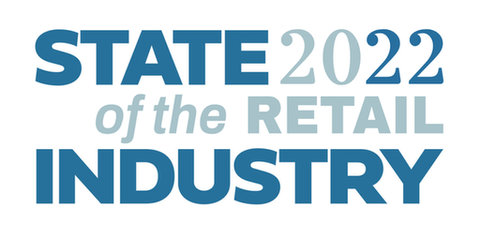
Changes over the past two years, driven in part by the pandemic, have had a significant impact on the retail landscape. The lines between online and in-store experiences are blurring, reshaping customer behaviors and expectations. To compete with the availability and convenience of online shopping, the physical retail store must create new compelling customer experiences that incentivize customers to return to in person shopping.
In response, many retail organizations are turning to technology innovations such as artificial intelligence (AI), virtual reality (VR), and location tracking, to help them develop more autonomous, efficient operations, while also up-leveling the in-store shopping experience to connect with customers in a more personalized, meaningful way. From augmented reality experiences (e.g., virtual fitting rooms) and contactless shopping experiences to advanced inventory management and AI-enabled safety and security monitoring, the opportunities for retailers to blend digital and physical experiences are endless.
While these retail technologies continue to evolve, three critical technology trends are helping to redefine retail in 2022 and beyond:
Real-time customer visibility will transform the physical shopping experience. By monitoring and automating customer tracking, personalized recommendations, dynamic item pricing, inventory visibility, and automated check-out, retailers will be able to create distinctive in-store customer experiences that compete with what people have come to expect from online shopping.
The retail industry is hungry for the ability to connect the physical and digital worlds to improve operational efficiencies and strengthen brand loyalty through more personalized in-store customer experiences
By David Sprinzen, VP of Marketing Vantiq

Edge computing will transform how retailers capture, manage, and leverage the ever-increasing stream of data generated by IoT sensors, cameras, and mobile devices. From increased bandwidth and latency improvements to reduced costs and improved security, edge computing will allow retail organizations to improve data access speed and performance which will be required for automating the real-time operations of retail stores.
Composable architecture will enable smart retail solutions to be rapidly developed with pre-packaged pieces of technology that are readily deployable and can be mixed-and-matched to enable highly customized, digitally enabled retail store environments. This will be supported by an ecosystem of hardware providers, systems integrators, and technology vendors that will provide components for various use cases such as in-store routing, asset management, robotic cleaning services, and more. By simplifying the development and deployment of autonomous retail applications with building blocks of business capabilities, retailers will be able to deliver more easily what customers want, when and how they want it.
The retail industry is hungry for the ability to connect the physical and digital worlds to improve operational efficiencies and strengthen brand loyalty through more personalized in-store customer experiences. By leveraging technologies such as smart signage, GPS routing, AR/VR, and more, retailers will be able to create digital interactions that allow them to gain real-time visibility into customer behavior and store environments, while also optimizing inventory management through real-time automation. The result: compelling, blended customer experiences that increase customer retention and engagement by incentivizing them to return to in-person shopping.














David Sprinzen, VP of Marketing for Vantiq
David Sprinzen heads marketing, training, and industry solutions at Vantiq. He comes from a diverse technical background in Electrical Engineering, Applied Physics, and Computational Neuroscience, and brings this practical knowledge to the discussion around how technologies like IoT, AI and edge computing can drive business transformation and address the growing societal needs around sustainability and making the world operate more efficiently.